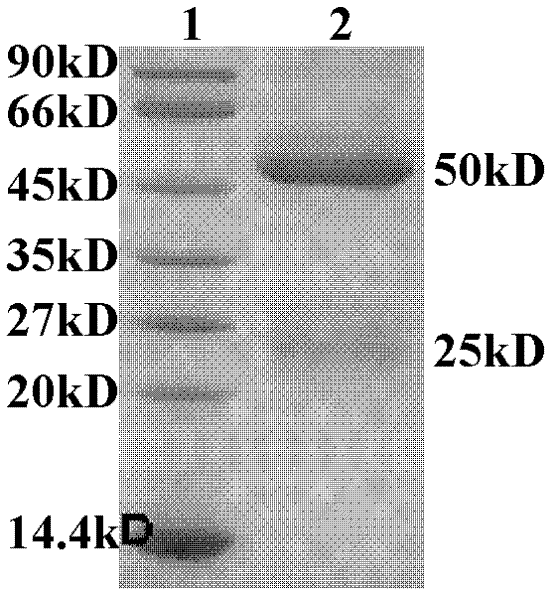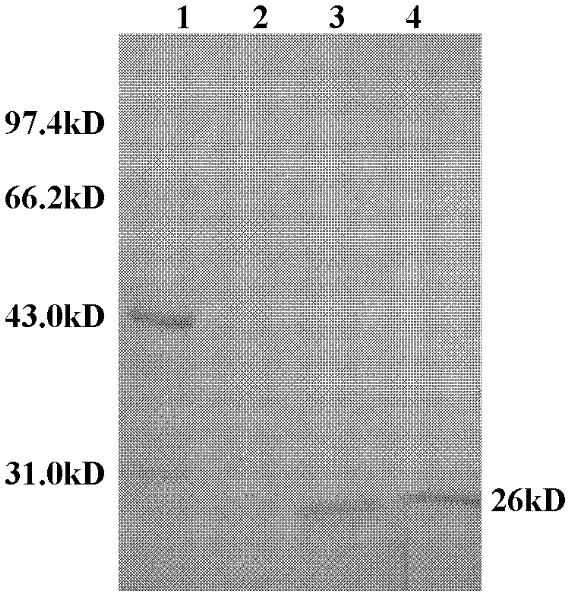Synthetic pokeweed antiviral protein (PAP) antigen and antibody, and preparation method and application thereof
An artificial synthesis and anti-virus technology, applied in the field of biology and biology, can solve the problems of PAP extraction difficulties, limited content, cumbersome purification steps, etc.
- Summary
- Abstract
- Description
- Claims
- Application Information
AI Technical Summary
Problems solved by technology
Method used
Image
Examples
Embodiment 1
[0032] 1.1 Design and synthesis of polypeptide sequences
[0033] According to the deduced amino acid sequence (Genbank No.AF338910) (SEQ ID NO3) of the deletion-type PAP gene fragment (deleted N-terminal signal peptide and C-terminal toxic region) transformed by our laboratory, the sequence searched by BLAST and Genbank was carried out. Homologous comparison analysis, using analysis software such as DNAStar and Biosum to predict the secondary structure and epitope of the protein, and selected two epitopes with good immunogenicity and hydrophilicity, a high possibility of linear epitopes, and no predicted epitopes. The polypeptide sequence of the secondary structure, SEQ ID NO1: DISGTERQDVETTLC and SEQ ID NO2: CRYPTLESKAGVKSR. The peptide was synthesized by Shanghai GL peptide Ltd.
[0034] 1.2 Antigen produced by polypeptide coupling
[0035] Since the small molecular polypeptide has no immunogenicity, it needs to be coupled to an immunogenic carrier protein, and the conjug...
PUM
 Login to View More
Login to View More Abstract
Description
Claims
Application Information
 Login to View More
Login to View More - R&D
- Intellectual Property
- Life Sciences
- Materials
- Tech Scout
- Unparalleled Data Quality
- Higher Quality Content
- 60% Fewer Hallucinations
Browse by: Latest US Patents, China's latest patents, Technical Efficacy Thesaurus, Application Domain, Technology Topic, Popular Technical Reports.
© 2025 PatSnap. All rights reserved.Legal|Privacy policy|Modern Slavery Act Transparency Statement|Sitemap|About US| Contact US: help@patsnap.com



